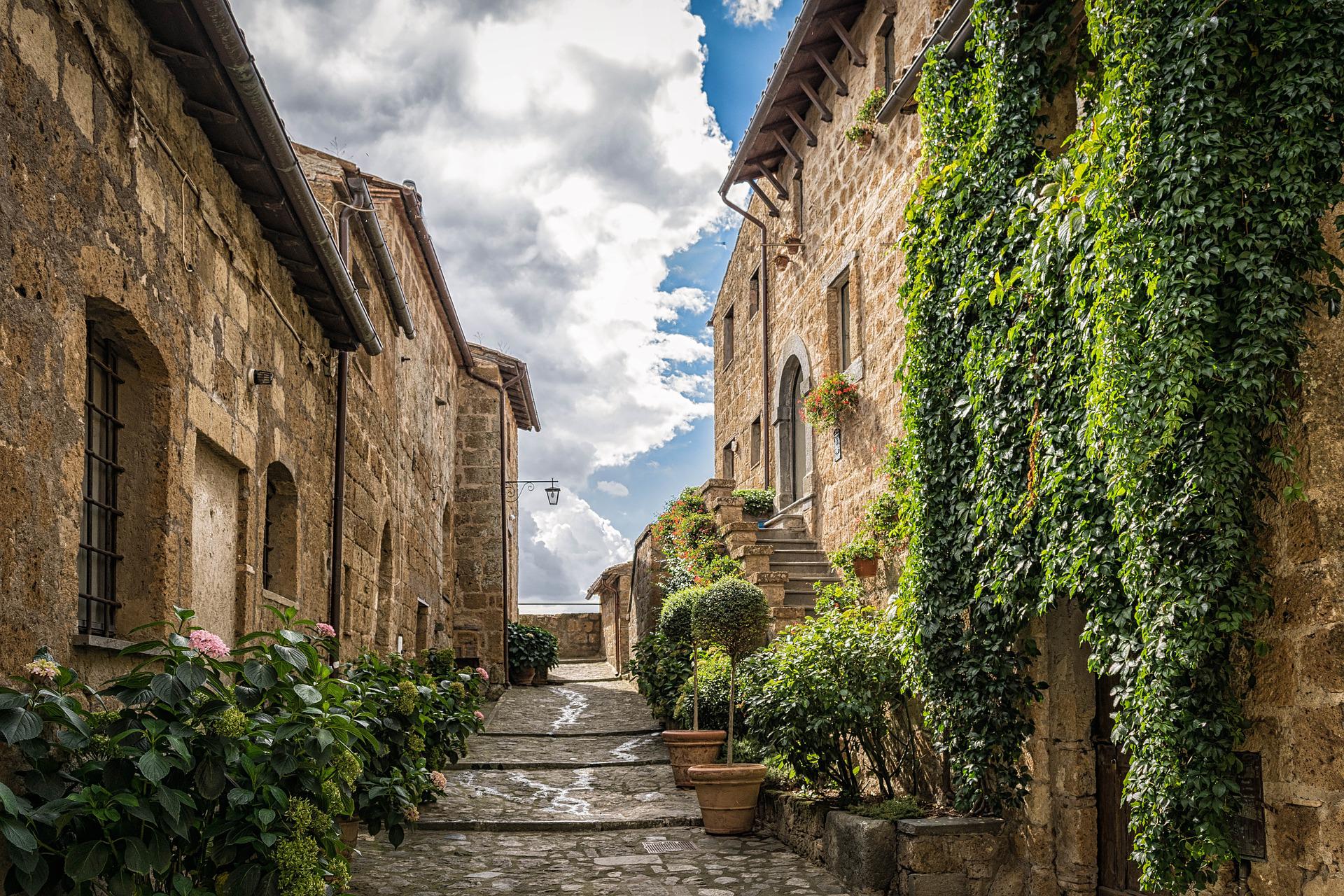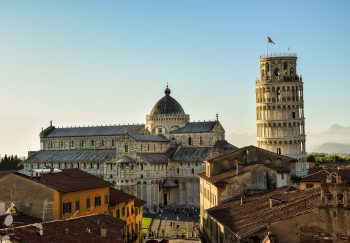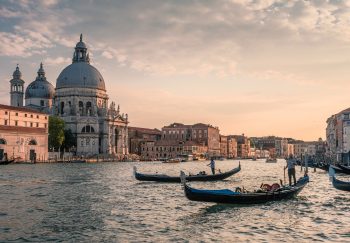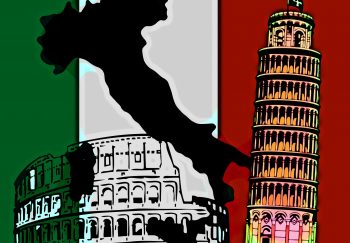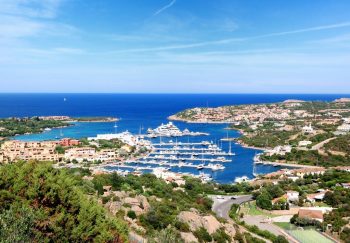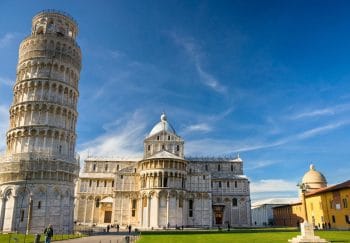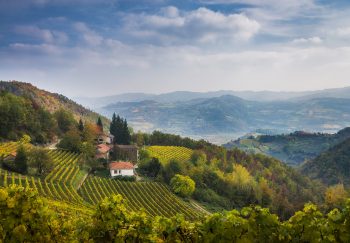It’s easy for people to forget the most important factor when planning a trip to Italy: when is the best time to visit! There are many benefits to traveling at different times of the year, as not all top Italian destinations are open year round. There is no one “best” time to travel. It all depends on what you are looking for and what you do in Italy.
Here are some benefits and disadvantages to having some flexibility when planning your trip to Italy. As an aside, we know that many parents won’t allow their children to travel to Italy during school vacations. They don’t want their kids to miss school. This not only restricts them to the most expensive and crowded times to visit Italy but, at least for us, it also makes it difficult to imagine a better education than learning about the history of ancient Rome or Renaissance art by actually visiting the sites. What could be a better classroom? ).
Notice: When we refer to a month being “crowded”, we are referring to the major destinations like Florence, Venice and Pompeii. Also, we are speaking in relative terms. All year, there is always a queue at the Colosseum and a crowd at Trevi Fountain. Sometimes, however, the wait to enter the Vatican museums can take up to 3 hours. Other times it takes only 10 minutes.
Remember that there are many other places like Umbria’s small towns or the undiscovered coastline of Puglia. This is why we love them!
Italy in January and February
Major cities will be bustling around New Year’s but few tourists are left by the end of the second week. It gets busier around Valentine’s Day. Cheap flights, low rates at hotels, quieter tourist spots. Now is the right time to make your dreams come true. See our Christmas Guides to Venice, Florence, and Milan for more information.
Carnevale is also celebrated at this time of the year. This holiday marks the beginning of Lent, and falls in February/early March. Italian cities and towns celebrate the occasion with parades, festivals, and theatre. It’s a fun, festive time in Italy. However, prices will not rise or tourists won’t be flocking to most Italian cities, such as Florence and Rome. If you go to places where Carnevale is really famous, like Venice or Viareggio, you will likely find more people and higher prices. Also, you might need to book hotel reservations up to one year in advance.
Remember that certain places may be closed on January 1 or January 6 for the Epiphany, which is a holiday marking the official ending of the Christmas season. If you have a strict schedule, make sure to check the museum opening hours.
It can be difficult weather-wise. January is the coldest month of the year. Bring warm clothes, especially if you are heading north. The average temperature for Venice in January is 30deg-42degF. Although rain is common, there are also clear and crisp days. It’s also quite atmospheric to see the Venetian canals covered in fog. This is something you won’t be able to see if visiting during the summer months. However, Venice’s canals can flood in winter. For more information, see our guide on Venice flooding.
If you don’t like cold, it is possible to travel further south and enjoy milder temperatures. This is a good time for you to travel south. The weather in Sicily remains in the 50s, even in January. In Naples, the temperature tends to be in 40s. The opposite extreme is January and February, which can be expensive, are the best months to visit the Alps if you plan to ski in Italy. Be aware that tourist-oriented restaurants and shops may be closed if you are visiting summer resorts like Amalfi or Cinque Terre. Inclement weather can also cause famous hiking trails like the Cinque Terre to close during winter. You can still get amazing deals and enjoy these famously crowded areas all to yourself. Our off-season guide to Amalfi Coast, and off-season guide to Cinque Terre discuss the pros and cons.
Italy in March and April
March and April are considered the “shoulder seasons”, the time when the weather is good but the crowds aren’t too large. It all depends on when you are coming. It also depends on the time of year Easter falls. This holiday is usually the start of high season. If Easter falls late, however, people will start arriving earlier. You can also expect more families to travel when schools are closed.
The busy Easter week is meanwhile. You should also double-check the opening hours of any sites during Easter. Also, be aware that many shops and restaurants will be closed on Easter Monday as well as April 25 (Liberation Day).
However, most places are less crowded in March than in June and September, except for Easter. Weather-wise, it is possible to still experience rain, but there are many beautiful days and temperatures. Temperatures in Rome and Florence tend to hover between the 50s and 60s.
We recommend April and March, excluding Easter week, to most tourists as the best months for visiting Italy.
Italy in May and Juni
Do not make a mistake: You are now in high season. June is busier than May and more expensive than May.
These months have clear benefits. It is warm and beautiful with temperatures of 75-80 degrees F in June, not only in Rome and Florence but also in Venice and Milan. It’s not often raining and there isn’t a cloud in sight. It’s warm enough to visit the beach in many areas. You might be the only person there if you visit the areas that are popular during the peak of summer, such as the beaches of Sardinia or the little resort towns of Puglia.
Keep in mind that May 1st is Italy’s Labor Day. Many shops, restaurants, and some sites will be closed. Before you leave, double-check the opening hours.
Italy in July and August
The high season is at its peak. It’s the height of the high season. Expect three-hour lines to the Vatican. A Pompeii is crowded with tourists.
It is also the hottest time of year. You should be prepared for temperatures in the 80s or 90s throughout Italy, especially from Rome and further south. There will also be a lot of humidity. It is worth considering heat because so much of Italy’s sightseeing involves walking and so few restaurants and museums are air-conditioned.
There are some benefits to visiting summer. The first is that summer is the best time to visit Italy. For example, opera is performed at the Baths of Caracalla in Rome. There is also 2km of shops and bars that line the walkway below the Tiber River. The nightlife is also booming.
August is an entirely different animal. It is the time when Italy closes for ferragosto and Italians flee to the coast. Ferragosto dates back to the ancient Romans and begins on August 15, but it ends at the beginning of September. But in reality, it lasts much longer. What does ferragosto mean for your trip to Italy? The majority of Italians have left the cities and closed most good restaurants, cafés, pharmacies and family-owned shops, and doctors’ offices. The big museums and tourist sites are still open.
Ferragosto creates a strange atmosphere in Italy’s major cities. For example, Rome can seem like a ghost city, where Romans have been replaced with large tour groups. August is not the right time for people-watching, and your subject should be locals.
You might consider visiting Italy in August or July if you have to travel there. Stay in a villa in Umbria and Le Marche, or at an agriturismo in Tuscany. Or, go against the grain and visit the primarily ski-oriented towns of the Italian Alps. You don’t have to go far in Italy to enjoy quiet summer days. them. Our blog on What to Expect in Italy During August gives you a more detailed look at this wild time of year in Italy.
Italy in September and Oktober
Although we think of September and October back home in the States as “fall”, when it comes time to visit Italy, they are actually quite different months. September is still a high season. In cities, however, the first two weeks of September often suffer from a lingering Ferragosto. Many shops and restaurants remain closed. Don’t let this fool you: September in many parts of Italy is still summer. It’s not nearly as strenuous as July or August. With temperatures in the 70s to 80s from Naples to Venice, temperatures are almost on par with June.
Even though October is still crowded in some areas (including the Cinque Terre coast and Amalfi coast), we love this month to be in Italy. It’s often beautiful, and it cools down enough to be in the 50s or 60s. Although there are more rainy days in July and June, the sun still shines. It’s also quieter in Italy’s main tourist areas by October’s end. We love the shoulder seasons of late September through early November. You can read more about why you should visit Italy in the fall.
Italy in November and Dec
November is the beginning of Italy’s offseason. December, except for Christmas week, sees very few tourists. Holidays include Christmas, December 8 (Feast Day for the Immaculate Conception), and December 26 (Santo Stefano). Make sure you check the opening hours of museums and other sites, especially the Vatican. There may be closures on All Saints Day on November 1.
It doesn’t matter where you live, the weather can be quite mild but it can also be wet. November is the rainiest month in many Italian cities. Rome, Florence, and Milan get between 4-5 inches and a half an inch of rain each month. This is comparable to New York City’s average but twice as much as London’s. The temperature is still quite mild in Rome (where it hovers between the 40s and 50s), but even though the sky is gray, the relative quiet of the Vatican museums and Florence Duomo can more than makeup for it.
